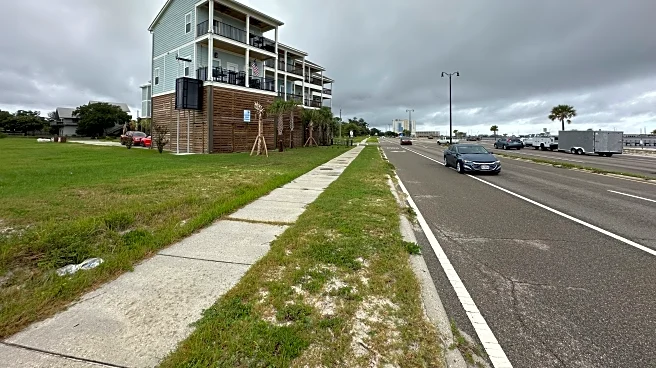What's Happening?
In the aftermath of Hurricane Katrina, which struck on August 29, 2005, the insurance industry has undergone significant changes to address the challenges posed by such catastrophic events. Katrina, a Category 3 hurricane, caused widespread devastation, particularly in New Orleans, Louisiana, resulting in over 1,800 deaths and extensive property damage. The storm led to over 1.7 million insurance claims, with payouts exceeding $41 billion. In response, the Insurance Services Office (ISO) introduced changes to commercial and residential property policy forms, particularly concerning water damage exclusions and windstorm deductibles. These changes aimed to clarify coverage terms and address litigation issues related to storm surge and levee breaks. Additionally, the industry has seen a shift towards percentage-based windstorm deductibles and increased focus on catastrophe modeling to better assess risk.
Why It's Important?
The evolution of insurance policies post-Katrina highlights the industry's need to adapt to increasing weather-related risks. These changes are crucial for ensuring that property owners are adequately covered in the event of future disasters. The introduction of more precise policy language and the shift towards percentage-based deductibles reflect a broader trend of aligning insurance practices with evolving climate patterns. This adaptation is vital for maintaining the financial stability of the insurance sector and protecting policyholders from underinsurance. Moreover, the emphasis on catastrophe modeling and risk assessment underscores the importance of proactive measures in mitigating the impact of natural disasters.
What's Next?
Looking forward, the insurance industry may continue to refine its approach to catastrophe risk management. This could involve further collaboration between public and private sectors to spread risk more effectively and implement robust building codes and zoning ordinances. The potential for mandatory risk-sharing mechanisms, similar to the Terrorism Risk Insurance Act (TRIA), may also be explored to provide financial backstops for catastrophic events. As climate change continues to influence weather patterns, the industry will likely focus on developing innovative products and loss control measures to enhance resilience against future disasters.
Beyond the Headlines
The changes in insurance policies post-Katrina also raise ethical and legal considerations regarding the responsibility of insurers to provide clear and comprehensive coverage. The industry's efforts to document offers of flood coverage and address underinsurance issues reflect a commitment to transparency and accountability. Additionally, the focus on loss control measures and stronger building codes highlights the role of insurers in promoting sustainable and resilient communities.












